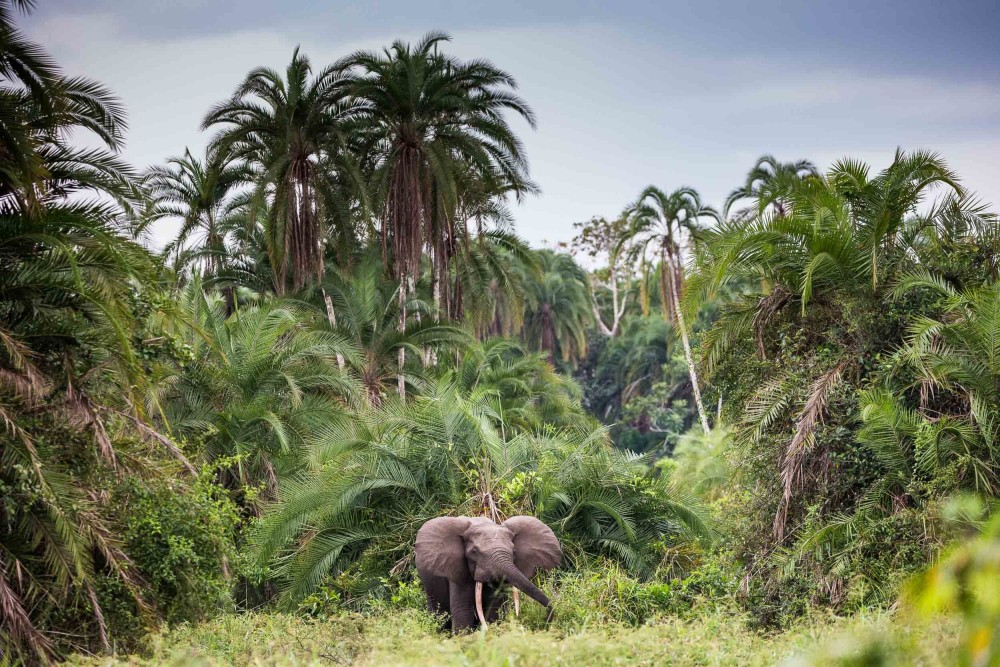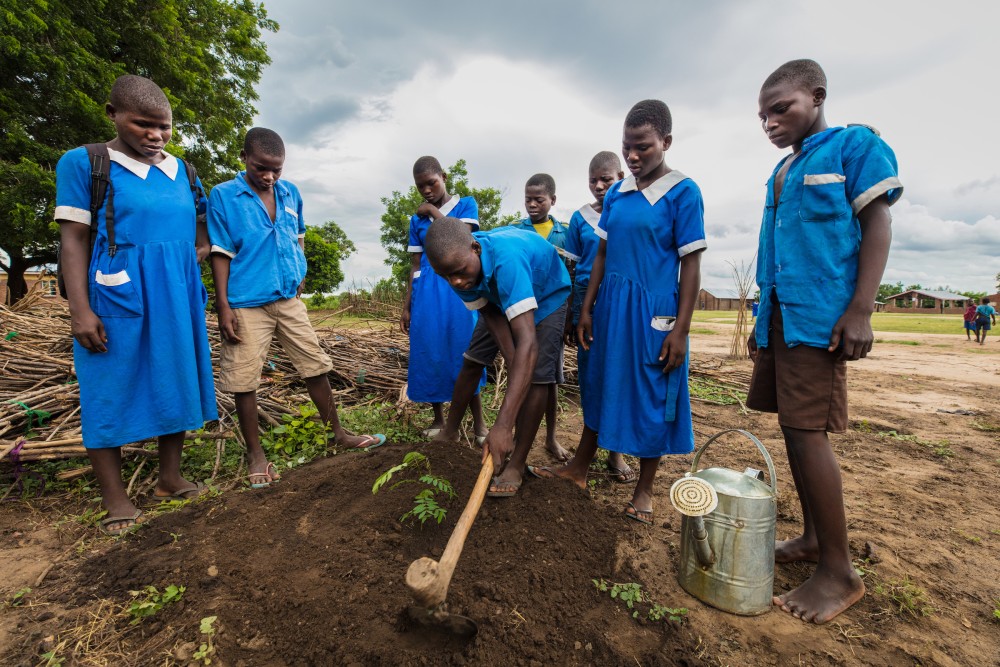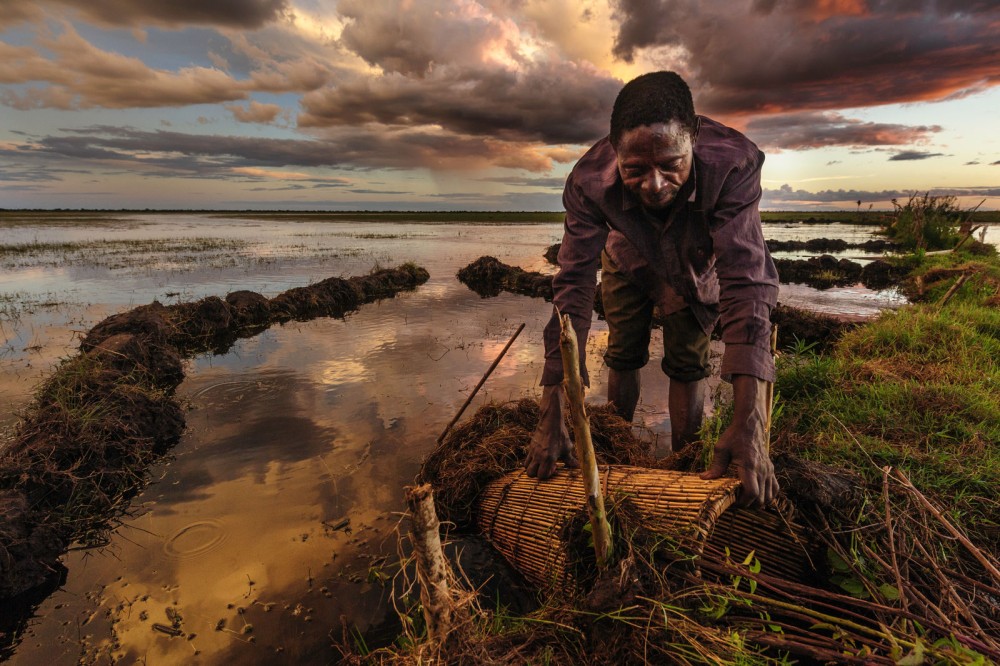Protecting Africa’s Intact Nature: The Most Effective Action to Increase Climate Resilience
To find ways to mitigate weather catastrophes, we first have to look after the very system that regulates climate: nature.
Today, the global community is desperately seeking ways to mitigate the scale and impact of climate change. World leaders are locked in discussions as they attempt to find solutions that will save humanity and the planet. Debates about the reduction of greenhouse gas emissions, a just transition to a net-zero global economy, and who should pay for this, are ongoing. These discussions are critical. Yet the issue which is being overlooked ̶ and which should underscore all attempts to fix our warming Earth ̶ is what we are doing to address the loss of nature.
Nature is the planet's in-built mechanism for regulating climate and mitigating the impact of extreme climatic events. But for nature to be properly effective, biodiversity ̶ which consists of all species interacting with each other and their environment ̶ must be intact and fully functional. In the Congo rainforest, for example, healthy populations of forest elephants, which disperse seeds and shape the forest undergrowth, and insects, which are vital to pollination, are both essential if the forest is to properly facilitate climate through the carbon cycle.
To keep global warming to an absolute minimum, we must anchor and safeguard the natural systems that still exist, in conjunction with reducing greenhouse gas emissions as quickly as possible. These are the most immediate and effective climate actions we have at our disposal.
 © Scott Ramsay
© Scott RamsayToday, with the global population now reaching eight billion, the impact of extreme weather on people is far greater than it was 90 years ago, when only two billion people inhabited the planet. Over this same timescale, our use of natural resources has quadrupled. This has reduced nature's productivity and its ability to regulate climate, and reduced our resilience to climatic events. In 2022, for example, Malawi experienced extreme rainfall. Over previous decades, naturally occurring miombo woodland - with its protective and soil binding functions - has been decimated through agriculture and charcoal production. This exacerbated the impact of unusually heavy rains and led to devastating floods, which displaced over 150,000 people.
Africa has the world's lowest per capita greenhouse gas emissions, but is one of the hardest hit continents in terms of climate change impacts. Africa's poorest communities are often powerless in the face of extreme weather events such as droughts and floods, while the famine and the livelihood insecurity that ensue are frequently catastrophic.
If we are going to find ways to mitigate these catastrophes, we first have to look after the very system that regulates them, which is nature.
While Malawi’s floods created devastating consequences for communities, had some of its existing protected areas not been effectively managed and restored, these floods could have seen even more catastrophic impacts.
 © Marcus Westberg
© Marcus WestbergThe climate crisis is a global crisis and what happens in Africa is felt by the rest of the world. It’s therefore essential that the international community contributes to alleviating this pressure on the continent. However, with this support, it’s Africa’s people that are best placed to understand their own challenges and the solutions needed to overcome them. Valuable investments into tangible solutions can only be found when those most affected are involved in designing the solutions.
Recognition of the urgency to protect biodiversity is building: world leaders have endorsed the Leaders’ Pledge for Nature, and the G7 countries have signalled their desire to create a nature-positive world. However, action to safeguard biodiversity at scale is still largely at lip-service level.
Solutions to protect nature need to be more than a pledge or a recommendation; they need to be at the heart of every decision.
Although we are beginning to acknowledge the urgency of these issues, there is still a disproportionate emphasis on land restoration - fixing nature once it has been destroyed, as opposed to protecting it from being destroyed. Tropical primary forest loss increased by 12% in 2020. An active intervention such as forest restoration is estimated to cost anywhere from US$125/ha to US$2,400/ha, with intensive levels of effort. Conversely, African Parks has currently estimated protected area management across a variety of different environments to be US$6/ha. Not only is biodiversity protection more cost effective than restoration, but restoring nature to the level of providing a full suite of vital ecosystem services, can take decades, if not longer. Humanity simply does not have the luxury of time.
Over 8,000 protected areas are gazetted in Africa. But most of these are too small or degraded to effectively safeguard globally significant ecosystem services and ensure ecological resilience to a changing climate.
In light of this, African Parks conducted an analysis in 2020 on Africa’s protected area network. Considering the size of the areas, the intactness of habitat and the strength of their legislation, 161 protected areas were identified as “anchor areas” that harbour significant biodiversity, sequester carbon, deliver clean air and water, and provide food security for people.
 © Steve Lorenz Fischer
© Steve Lorenz FischerWhile these 161 anchor areas represent a small percentage of the total number of protected areas, they constitute nearly a quarter of the protected surface area in Africa. They also represent 85% of Africa’s ecoregions and their unique biodiversity. If these areas are effectively managed, they can become the foundation for the protection and restoration efforts in the broader landscape, providing functioning ecosystem services and stability from which communities can benefit. This holistic approach, focused on these “anchor areas”, could form the backbone of Africa’s strategy by setting aside up to 15% of the continent for nature and creating climate resilience for some of the most exposed communities on Earth.
In the African Parks analysis, it was assessed that only 40% of the 161 protected areas are adequately resourced and managed for long-term sustainability. The remaining areas require urgent attention to eliminate the biodiversity threats they face such as habitat degradation and species loss. A task which can be achieved when there is commitment from local governments, communities and global partners.
Effective management and financial assistance to protect biodiversity is a shared responsibility of governments, local communities, management organisations, donor organisations and the private sector. For this joint responsibility to be successful, it is crucial there is clear and collective accountability for results on the ground.
As a global community, we have drawn on the natural capital of the world, greatly impairing its ability to support life on Earth. Our problems have escalated and thus our solutions need to be escalated. While creating a stable and predictable climate may not be within our reach in this lifetime, we need to substantially address the root cause of the problem: inadequate protection of existing natural systems, while ensuring socio-economic stability to give the most vulnerable communities of the world the resilience to survive this critical period in our planet’s history.
2 November 2022 Peter Fearnhead, African Parks, CEO
Your Support Goes a Long Way
At African Parks we are working everyday to protect Africa's last wild landscapes. By donating to us, you are making a difference and are giving hope to people and wildlife across the continent.
Donate